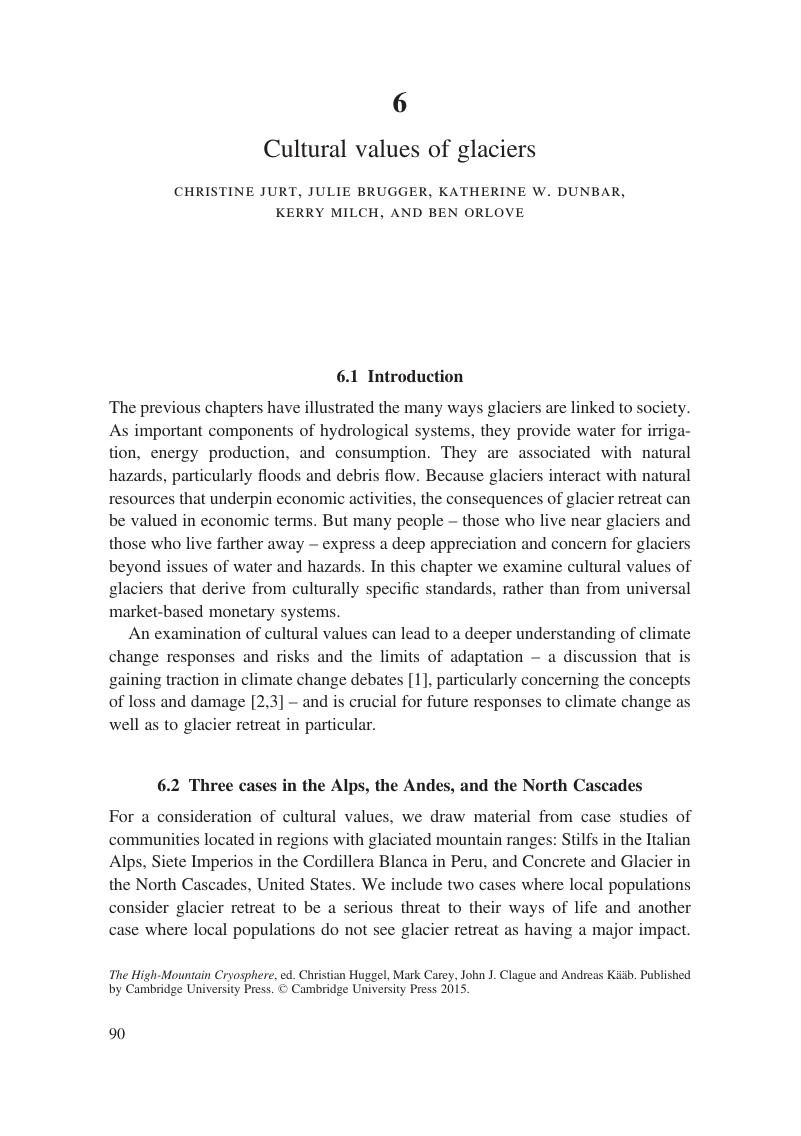Book contents
- The High-Mountain CryosphereEnvironmental Changes and Human Risks
- The High-Mountain Cryosphere
- Copyright page
- Contents
- Contributors
- Book part
- 1 Introduction
- Part I Global drivers
- 2 Influence of climate variability and large-scale circulation on the mountain cryosphere
- 3 Temperature, precipitation and related extremes in mountain areas
- 4 Snow and avalanches
- 5 The frozen frontier
- 6 Cultural values of glaciers
- Part II Processes
- Part III Consequences and responses
- Part IV Conclusions
- Index
- References
6 - Cultural values of glaciers
from Part I - Global drivers
Published online by Cambridge University Press: 05 September 2015
- The High-Mountain CryosphereEnvironmental Changes and Human Risks
- The High-Mountain Cryosphere
- Copyright page
- Contents
- Contributors
- Book part
- 1 Introduction
- Part I Global drivers
- 2 Influence of climate variability and large-scale circulation on the mountain cryosphere
- 3 Temperature, precipitation and related extremes in mountain areas
- 4 Snow and avalanches
- 5 The frozen frontier
- 6 Cultural values of glaciers
- Part II Processes
- Part III Consequences and responses
- Part IV Conclusions
- Index
- References
Summary

- Type
- Chapter
- Information
- The High-Mountain CryosphereEnvironmental Changes and Human Risks, pp. 90 - 106Publisher: Cambridge University PressPrint publication year: 2015
References
- 9
- Cited by

